December 1, 2006
By Al Dean
A well-developed method to build both prototype and create end-use, directly manufactured parts is laser sintering. While its specifics may vary among vendors, the basics are much the same: parts are built in layers with a laser tracing out each layer taken from a slice (or section) of the part’s geometry. The laser sinters the material, heating it to a point just below its melting temperature. This binds the particles together, offering the benefit that the particles are also sintered to the preceding layer. One of the leading companies of this branch of rapid prototyping and manufacturing (RP&M) is Electro-Optical Systems (EOS) of Munich, Germany.
EOSINT P machines, the company’s RP&M solutions for the production of plastic components, have dual chambers. One, in which the parts are built, is heated to 150 degrees C (to aid the sintering process) while the other is used to cool completed parts.
Currently, there are four EOSINT P machines, two of which — the entry-level FORMIGA P 100 and the EOSINT P 730 — are brand new and were not available at the time of this review. We worked with the P 390, which uses a 50W carbon-dioxide laser fitted with theta optics. It has a build envelope of 13.4 in. x 13.4 in. x 24.4 in. and has a layer thickness that can vary between 0.004 in. and 0.006 in. Because of this variance, the build speed can also vary between 0.4 in. and 1 in. per hour, depending on the complexity of the layers.
We also tested the P 700, which has a larger build envelope of 27.6 in. x 15 in. x 22.9 in. and builds in layers of 0.004 in. to 0.006 in. (depending on the material).
 |
| The EOS P 390 |
> > The P 390 uses a single set of laser optics to build plastic product of any complexity from polyamide or polystyrene materials directly from MCAD data. It can produce fully functional parts as well as high-quality patterns for plaster, investment and vacuum casting. The control station is a separate unit alongside the main cabinet.
Because the P 700’s build envelope is twice that of the P 390, it uses a dual-laser setup, with each laser handling half of the build chamber, to maintain the same 0.4 in. to 1 in. per hour build speed of the smaller machine. Other than build capabilities, the two machines also differ in size and slightly in configuration. The P 390 measures 72.4 in. x 46.3 in. x 82.7 in. and the control PC is located in a free-standing unit. Because of the dramatically larger build envelope and the dual optics, the P 700 measures 88.6 in. x 61 in. x 82.7 in., but all of the control units are integral to the unit.
Because the RP material begins as a powder and is self-supporting once sintering takes place, structural supports are not needed. This has two benefits: there’s less hand finishing and you can stack parts vertically. Whereas in resin-based systems you can only produce one level of parts, with sintering, you can nest levels to make use of the entire build chamber, leaving as little space as possible, optimizing each build — all of which is ideal if you’re looking to rapid or direct manufacturing.
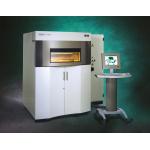 |
| The EOS P 700 |
< < The P 700 allows you to build parts up to 27.6 in. x 15 in. x 22.9 in. It uses dual laser optics to ensure that build speed is maintained from the P 390, while allowing for more capacity.
Another differentiator for EOS is the Integrated Process Chain, which integrates these systems into an automated, cohesive whole by automating part breakout, powder filtering, and circulation for reuse, if applicable. The system is sealed and can operate within clean environments.
A Host of Plastics
There are a host of plastic-based materials that can be used in the EOSINT P printers. PA 2200 is a PA 12 polyamide, typically used for a small series of fully functional prototypes with high-end finish. Although not as heat resistant as the glass-filled variant (PA 3200 GF), these parts can withstand high mechanical and thermal load.
While the PA materials are EOS’ stock in trade, one of the newer powders to come to market is based on the same core powder, but filled with aluminum. Called Alumide, it has greater stiffness, a metallic appearance, and applications range from direct parts in the automotive industry (e.g., wind tunnel tests or parts), to tool inserts for injection and molding small production runs. It can be used when a metallic appearance is needed or tougher-than-normal parts are required. Also, Alumide parts can be milled, drilled, ground, and polished.
Another new material is PrimePart, developed to build models, functional prototypes and end products as well as spare parts that have “a balanced relationship” between mechanical strength and elasticity over a wide temperature range. Essentially, it is stronger and can withstand a slightly wider thermal range than the PA materials.
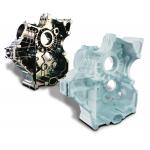 |
| Courtesy of EOS/Poggipolini. |
> > Racing parts in racing time:
Poggipolini
produced the patterns for this gearbox housing in PrimeCast 100, a polystyrene material for laser-sintering. The pattern was used for casting in titanium.
For those looking to use the system to build casting patterns, there are two options: Polystyrene PS 2500 can build in 0.007-in. layers and can be used for parts like traditional wax patterns, while those looking for sharper details (similar to plaster casting and master patterns for vacuum casting), the newer PrimeCast can be built in 0.005-in. layers.
Two of the newest materials available in the EOS product range are a fire-resistant material conforming to V0 safety requirements (suitable for those looking for temperature resistance in the 180° C range) as well as a variant of its filled powders called CarbonMide. This is a carbon-filled polyamide that is black in color and encompasses the benefits you’d associate with carbon-filled materials such as rigidness and light weight.
Cost of Ownership
The two machines are priced at around the $295,500 mark for the P 390 machine and $731,500 for the newer P 730. This includes a manual breakout station, a one-year warranty, and a service contract. If you want to take the Process Chain equipment, you’re looking at $88,900 for the P 730, and $69,00 for the P 390.
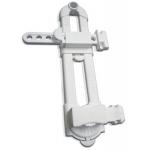 |
| The OrthoLength from OrthoMeter A/S. |
OrthoMeter A/S
, which helps surgeons determine proper leg length during hip-replacement surgery, is an example of direct manufacturing. The part is a disposable, adjustable assembly of SLS parts. A series of 300 of the 9-piece assemblies was required, and direct manufacturing allowed a very quick change of design, lower cost, reduced time to market (no tooling), and geometry that would have been impossible to manufacture traditionally.
Beyond the first year, service contracts are available for both machines. Along with capital and infrastructure costs, materials represent a major portion of the ongoing costs associated with any RP system. EOS materials are available at a range of costs. The two core polyamide materials, PA 2200 and PA 3200 GF cost approximately $67.50 and $53.75 per kilogram respectively. Alumide is slightly less costly, while PrimePart and PrimeCast cost slightly more. It’s worth considering material reuse, as this can have an effect on the running costs. If you can reuse the powder, then obviously the systems cost less to run. It’s important to note that this reusable aspect varies among materials. For example, with PS 2500 all unexposed material can be reused, but EOS recommends that only new, fresh Alumide powder is used, as others have different used-to-fresh ratio recommendations.
Parts Completed
While a technology can be interesting, what’s more interesting is a true product — and to have a product, you need applications. In regard to EOS’ laser sintering machines and materials, the applications are massively wide ranging. In terms of pure prototype production, the material range results in hard-wearing prototypes that can serve a multitude of purposes. One myth I’m keen to dispel is that laser-sintered parts can’t reproduce detailed components. Having had my set of benchmark models built in a range of materials, it’s clear that EOS’ laser-sintering machines are capable of faithfully recreating even the most detailed work. Add in the typically superior mechanical properties of the materials and you don’t have to treat them with kid gloves; they’ll stand up to all manner of abuse, intended or otherwise. When you look at the newer materials, in particular the Alumide and CarbonMide materials, it’s clear that prototype parts can be produced that will extend these advantages further.
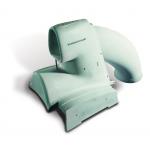 |
| Courtesy of EOS/Toyota Motorsport GmbH. |
> > Laser-sintered rollhoop for Formula 1 racing car used for wind tunnel testing. Courtesy of EOS/
Toyota Motorsport GmbH
.
When looking at EOS’ offering from the Direct or Rapid Manufacturing perspective, it’s clear these systems are capable of creating end-use parts directly. This could be the simple replication of existing designs where injection molding isn’t cost effective because part counts are much lower. But more interestingly, the freedom of design afforded, without recourse to design for assembly or manufacture, means that you can design parts purely for their functional and aesthetic qualities. Whether you’re looking at bringing RP inhouse as many organizations have already done, or work with service providers, the development work EOS has done and continues to do means that you can take advantage of these benefits in a manner that suits your business and project requirements.
Al Dean is Technology Editor of the UK's leading product development and manufacturing journal, MCAD and is Editor of Prototype, for the rapid prototyping and direct manufacturing industry, both available by clicking here. Send your comments about this article through e-mail by clicking here. Please reference “EOS P 390 and P 700” in your message.
EOS—Electro-Optical Systems
Munich, Germany
EOSINT P 390
> Build Volume
13.4 x 13.4 x 24.4 in.
> Build Speed
0.4 - 1 in./hour
> Layer Thickness
0.004 in. — 0.006 in. (depends on material)
> Stackable Build Chamber
> Laser Type
50W CO2 laser with F-theta lens
> Scan Speed
5 mps
> Power Supply
32A
> Power Consumption
4kW
> Connectivity
Ethernet
> Machine Size
72.4 x 46.3 x 82.7 in.
> Weight
1,060Kg
EOSINT P 700
> Build Volume
27.6 x 15 x 22.9 in.
> Build Speed
0.4 — 1 in./hour
> Layer Thickness
0.004 in.—0.006 in. (depends on material)
> Stackable Build Chamber
> Laser Type
2 x 50W CO2 laser with F-theta lens
> Scan Speed
5 mps
> Power Supply
32A
> Power Consumption
2.2kW
> Connectivity
Ethernet
> Machine Size
88.6 x 61 x 82.7 in.
> Weight
2,300Kg
Here are some more examples of the types of parts you can produce with the EOSIN P 390 and P 700 plastics laser-sintering machines. click images to enlarge.—DE
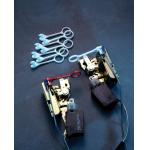 |
| EOS GmbH. |
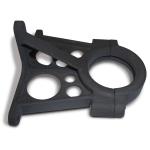 |
| EOS GmbH. |
 |
| EOS GmbH. |
Subscribe to our FREE magazine, FREE email newsletters or both!
About the Author
DE’s editors contribute news and new product announcements to Digital Engineering.
Press releases may be sent to them via [email protected].
Related Topics






